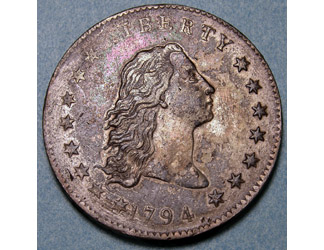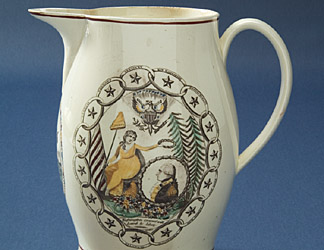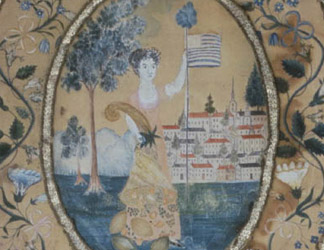Symbols of a New Nation
The American flag did not play a major role in the War of Independence. Most of the myths about the flag’s importance during the Revolution—including the famous tale of Betsy Ross sewing the first flag for General Washington—emerged much later, after the Star-Spangled Banner had become the nation’s most significant and cherished icon. At the time the American flag was created, it did not attract much attention from the general public; its primary function was to identify ships and forts. Ordinary Americans in the Revolutionary era turned to a variety of other symbols—the eagle, Lady liberty, George Washington— to express their patriotism and define their national identity.
This would start to change during the War of 1812. Often referred to as the “Second War of Independence,†the conflict inspired a fresh wave of patriotism in a generation too young to remember the Revolution. When Key declared that “our flag was still there,†he fused the physical symbol of the nation with universal feelings of patriotism, courage, and resilience. By giving the flag a starring role in one of the most celebrated victories of the war, Francis Scott Key’s song established a new prominence for the flag as an expression of national identity, unity, and pride. And by giving it a name—that Star-Spangled Banner—Key transformed the official emblem into something familiar and evocative, a symbol that Americans could connect with and claim as their own. The flag was no longer just an emblem of the nation; it became a representation of the country’s values and the ideals for which it stands.
In the years since 1814, in times of celebration and crisis, pride and protest, people have raised the flag to express their ideas about what it means to be American.
The Flag in the Civil WarCollect Stars To Complete The Flag
How was the American flag used before the War of 1812?
- There was no American flag before the War of 1812
- As a symbol of the British Empire
- To identify ships and forts
-

Flag of the Second Continental Light Dragoons
Continental soldiers carried regimental banners that evoked ideals of freedom, valor, and home. This squadron flag from 1776, features a canton of thirteen “liberty stripes†and the Latin motto: “Her country calls and her sons respond in tones of thunder.â€
-

First U.S. Silver Dollar
In April 1792 Congress passed the Coinage Act, which created the U.S. Mint and established the dollar as the official unit of U.S. currency. The act required coins to have “an impression emblematic of liberty†on the front and the eagle on the reverse.
-

Liverpool-type jug
After the Revolution, English manufacturers appealed to American consumers by exporting decorative ceramics that celebrated the new nation and honored its heroes. This jug features a variety of early patriotic symbols, including the liberty cap, eagle, and American flag.
-

Schoolgirl’s picture
This delicate picture was made by an unknown pupil at Abby Wright’s school in South Hadley, Massachusetts, in 1809. Lady Liberty, clad in an empire-style dress, holds a flagpole topped with a liberty cap and an upturned cornucopia, a symbol of plenty.
-

Fire bucket
Volunteer fire companies were an active and essential part of civic life during the early Republic. Firefighters often expressed their pride with elaborately decorated buckets such as this one, a rousing invocation to male heroism and patriotism.




